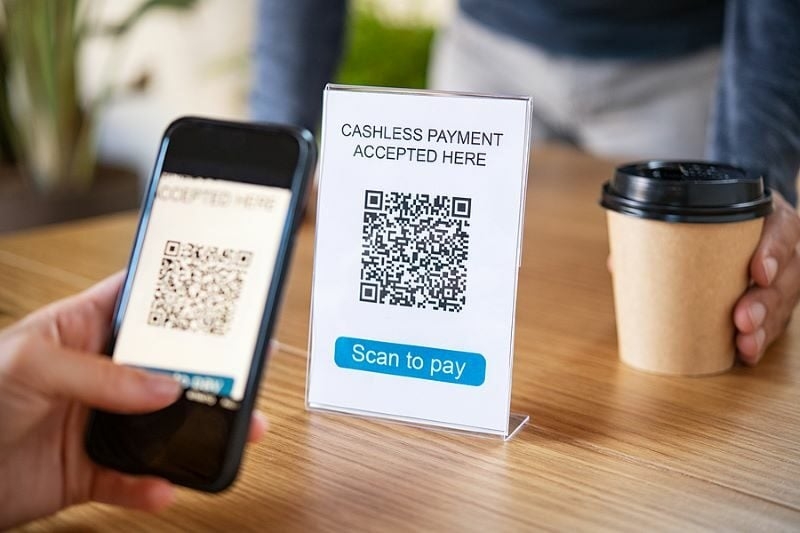During my 15 years in the payments industry, I have witnessed various payment methods come and go.
There are always the ‘early adopters’ – these companies are straight out the gates with new ways for customers to pay and are typically in the i-gaming, forex and, more recently, crypto verticals.
If we consider the original shape of PSD2 — single immediate payments — it’s only logical that loading a wallet or account were an obvious fit for Open Banking payments.
At Token, we’ve also observed repayment of credit card debts as an early growth use case.
Once a payment method conquers these early adopting verticals, new payment methods eventually migrate to traditional e-commerce.

Token’s Michael Lane
Now that refund capabilities are becoming available, either through regulation or innovation, Open Banking payments are beginning to follow this trajectory. We are seeing the major payment gateways being asked by their customers for account-to-account (A2A) payments, and, in response, they are looking to push out A2A payment capabilities. This is when we’ll start to see the big boom: account-to-account payments on thousands, hundreds of thousands of e-commerce websites across the UK and Europe.
Then what’s next? Customer present. Scanning a QR code for payments, in-app in-store payments, links generated by customer service staff and set to the customers mobile, and of course NFC. .
QR codes are interesting. The Covid-19 pandemic triggered a significant shift in customer behaviour around QR codes. For example, it is becoming increasingly common to order and pay using a QR code in restaurants. Considering WeChat and Alipay’s success in China, there’s definitely potential for merchants in Europe to use QR codes on terminals or tablets to accept Open Banking payments.
Easy as 1, 2, 3
Thinking again about e-commerce: every country or region has its top 10 e-tailers — those household names that can really propel A2A payments to the mainstream by putting it on their checkouts. The question is: when will they adopt?
In reality, before e-tailers adopt A2A payments, they really need to see three things: Stability, conversions, and user experience.
Let’s take stability. This was the first pin we had to knock down in the early days of Open Banking.
Today, we’re now assured of the stability of Open Banking connections in the majority of Europe. In the vast majority of cases, when a consumer initiates a payment, it doesn’t time out or break – it simply works.
Let’s say a customer needs to be exposed to a new payment method about three times before they “switch” to it. Think of it as a ‘1-2-3 approach’, where the third time’s the charm.
A big e-tailer would prefer to let consumers do stages one and two with other shops, illustrating the importance of the entire Open Banking industry working together to drive mass adoption.
Getting A2A payments on as many checkouts as possible over the next 12 to 18 months will ultimately drive the largest e-tailers in the world to adopt A2A — which, in turn, will propel A2A into the mainstream.
And then last, but by no means least: conversion. Conversion is important to all merchants, but especially so for the largest e-tailers. A single fraction of a percentage of movement costs them, or benefits them, to the tune of tens or hundreds of thousands of pounds and euros.
User experience
If we really want A2A to become a dominant payment method once it reaches the mainstream, we need to see it go beyond single immediate payments.
The user experience of a single, immediate A2A payment is great — one or two clicks and you’re set. However, for A2A payments to capture a portion of cards’ share of checkout, we need to put A2A payments behind “Buy Now” buttons.
As a consumer, once you’ve used that single-click checkout button, irrelevant of the payment mechanism behind it, you simply don’t want to go back to a checkout experience that offers an even slightly higher level of friction.
Here’s the good news: Variable recurring payments (VRPs) capabilities will allow us to put Open Banking payments behind ‘Buy Now’ buttons.
But I’d like to see faster progress around VRPs in the UK. We need all the banks to offer it and all the TPPs to offer it to their PSUs. We need to open up what is allowed under VRPs from today’s somewhat limited scope.
There is also a need to work out competitive pricing, and agreements on who is liable if something goes wrong — all of these are things that card schemes have worked out over decades, but we need to do this in the next 18 months in the UK — and then replicate it across Europe.
Thinking about ‘ways to pay’
When consumers think about payments, it’s not in terms of “use cases”, but rather as “ways to pay”.
By the end of 2022, I’d like to see us shift from conversations about Open Banking payments use cases, to talking about account-to-account payments as simply a way to pay — and hopefully, the way to pay – which will gradually end the dominant market share of cards and mainstream wallets.
However, before that can happen, we need Open Banking payments to penetrate the world of e-commerce and move to the world of customer present transactions.
Making progress
We can identify the first adopters of Open Banking payments. So, who will be the last?
It might well be those big e-tailers.
Those household name e-tailers require stability, conversion and user experience, so we need to knock down those first three pins before they move to adopt.
We’re part way there, having already knocked one down – stability.
The second, conversion, is now already equal to, or better than, cards because of that stability. And conversion will only continue to improve as customers are exposed to Open Banking payments in more settings, and we see barriers like IBAN discrimination continue to be brought down.
The third pin is delivering that user experience – one that is unquestionably the most frictionless it can be. Open Banking’s ability to guarantee this is becoming a reality. While this is linked to rules and regulation, progress is being made — and at a pace. Watch this space.
Written by Michael Lane, VP of sales at Token










